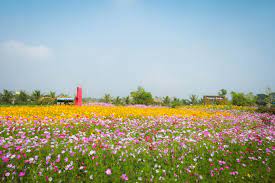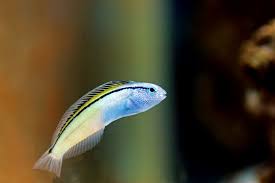
Flowers play a central role in the vibrant floriculture industry, which encompasses the cultivation, marketing, and trade of ornamental plants across the globe.
**1. Diversity of Floral Species:**
The world is home to a vast array of floral species cultivated for ornamental purposes. From classic roses and tulips to exotic orchids and proteas, each flower type offers unique beauty and cultural significance.
**2. Major Flower Categories:**
Flowers can be categorized into various groups based on their botanical characteristics and uses. These include annuals, perennials, bulbs, climbers, and shrubs, each with distinct growth habits and seasonal patterns.
**3. Importance of Cut Flowers and Potted Plants:**
Cut flowers and potted plants are essential components of the floriculture trade. Cut flowers are harvested for bouquets, arrangements, and floral displays, while potted plants serve as decorative houseplants or garden additions.
**4. Global Flower Markets:**
The demand for flowers is widespread, with major markets in Europe, North America, Asia-Pacific, and other regions. The Netherlands, Colombia, Ecuador, and Kenya are leading exporters, supplying flowers to international markets.
**5. Role of Greenhouse Cultivation:**
Greenhouses enable year-round flower production by controlling environmental factors such as temperature, humidity, and light. This technology extends growing seasons and facilitates the cultivation of delicate flowers in diverse climates.
**6. Economic Impact of Floriculture:**
Floriculture contributes significantly to the global economy, providing livelihoods for millions of people involved in cultivation, distribution, and retail. It supports local economies in both developed and developing nations.
**7. Sustainable Practices in Flower Farming:**
The floriculture industry is increasingly adopting sustainable practices to minimize environmental impact. Organic farming methods, water-efficient irrigation, and renewable energy usage are key initiatives in responsible flower cultivation.
**8. Flower Auctions and Supply Chains:**
Flower auctions serve as vital trading hubs, connecting growers with buyers worldwide. Auctions in Aalsmeer (Netherlands), Bogota (Colombia), and Bengaluru (India) are renowned for their scale and efficiency.
**9. Technological Innovations in Floriculture:**
Advancements in genetics, breeding, and crop management enhance flower quality and yield. Biotechnological techniques like tissue culture and genetic modification are transforming the industry’s production capabilities.
**10. Consumer Trends and Floral Preferences:**
Consumer preferences influence floral diversity and market dynamics. Trends such as eco-friendly bouquets, native species revival, and seasonal flower subscriptions reflect changing consumer values.
**11. Cultural Significance of Flowers:**
Flowers hold cultural significance worldwide, featuring prominently in ceremonies, celebrations, and rituals. They symbolize emotions, commemorate milestones, and express cultural identities across diverse communities.
**12. Impact of Climate Change:**
Climate change poses challenges to flower cultivation, affecting crop yields and seasonal patterns. Growers are adopting resilient plant varieties and sustainable practices to mitigate environmental risks.
**13. Future Outlook and Industry Growth:**
The floriculture industry is poised for growth, driven by expanding markets, technological innovations, and evolving consumer trends. Sustainable development and ethical sourcing are integral to its long-term viability.
**14. Opportunities for Small-Scale Producers:**
Small-scale flower farmers play a crucial role in local economies and artisanal markets. Direct-to-consumer sales, community-supported agriculture (CSA) models, and farmer cooperatives promote small-scale entrepreneurship.
**15. Cross-Cultural Exchange and Trade:**
Floriculture facilitates cross-cultural exchange through flower diversity and international trade. Imported flowers enrich local markets, fostering appreciation for global floral traditions.
The floriculture industry embodies the intersection of nature, culture, and commerce, bridging continents through the universal language of flowers. As demand for sustainable, ethically sourced blooms grows, the industry continues to adapt, innovate, and flourish.
Flowers are cultivated around the world for various purposes, contributing to a diverse and dynamic floriculture industry that encompasses production, trade, and consumption.
**1. Roses (Rosa spp.):**
Roses are iconic flowers cultivated globally for their beauty and fragrance. They symbolize love, passion, and elegance and are widely used in bouquets, gardens, and perfumery. Major rose-producing countries include Ecuador, Kenya, and Colombia.
**2. Tulips (Tulipa spp.):**
Tulips are renowned for their vibrant colors and graceful form. Originating from Central Asia, tulips became synonymous with Dutch horticulture during the “Tulip Mania” era. The Netherlands remains a leading producer of tulip bulbs.
**3. Orchids (Orchidaceae):**
Orchids are diverse and exotic flowering plants with intricate blooms. They are prized for their unique shapes and colors and are favored as potted plants and cut flowers. Thailand, Singapore, and Taiwan are key orchid exporters.
**4. Lilies (Lilium spp.):**
Lilies are elegant flowers known for their large, trumpet-shaped blooms. They are popular in floral arrangements and garden landscaping. China, the Netherlands, and the United States are major producers of lily bulbs.
**5. Chrysanthemums (Chrysanthemum spp.):**
Chrysanthemums are versatile flowers valued for their longevity and abundance of colors. They are used in bouquets, as potted plants, and for floral displays. Japan and China lead in chrysanthemum cultivation.
**6. Carnations (Dianthus caryophyllus):**
Carnations are classic flowers with ruffled petals and a spicy fragrance. They are favored for corsages, boutonnieres, and cut flower arrangements. Colombia and Kenya are major producers of carnations.
**7. Gerbera Daisies (Gerbera jamesonii):**
Gerbera daisies are cheerful flowers with large, colorful blooms. They are popular in bouquets and floral design due to their vibrant hues. The Netherlands and Kenya are key gerbera producers.
**8. Sunflowers (Helianthus annuus):**
Sunflowers are bright, cheerful flowers symbolizing happiness and vitality. They are grown for their edible seeds, oil extraction, and ornamental value. Ukraine, Russia, and the United States are top sunflower producers.
**9. Hydrangeas (Hydrangea spp.):**
Hydrangeas are prized for their voluminous clusters of flowers and varied colors. They are used in gardens, as cut flowers, and for dried floral arrangements. Japan and the Netherlands specialize in hydrangea cultivation.
**10. Peonies (Paeonia spp.):**
Peonies are luxurious flowers known for their lush petals and fragrance. They are popular in wedding bouquets and floral décor. China, the United States, and Japan are major peony producers.
**11. Proteas (Protea spp.):**
Proteas are exotic flowers native to South Africa, renowned for their striking appearance. They are prized for their unique shapes and are popular in tropical floral arrangements. Australia is a significant protea producer.
**12. Indigenous Flowers:**
Many regions cultivate native flowers unique to their ecosystems. Australian wildflowers, South American bromeliads, and African veld flowers are examples of indigenous species celebrated for their biodiversity.
**13. Specialized Flower Varieties:**
Beyond mainstream flowers, specialty varieties like anthuriums, ranunculus, and calla lilies cater to niche markets. These premium blooms command high prices in upscale floral design.
**14. Industry Trends and Innovations:**
The floriculture industry is evolving with changing consumer preferences and technological advancements. Sustainable practices, biodegradable packaging, and online flower sales are reshaping the market landscape.
**15. Emerging Markets and Global Trade:**
New regions are entering the floriculture market, driven by rising demand for flowers. East Africa, Southeast Asia, and Latin America are emerging as key players in the global flower trade.
The floriculture industry encompasses a vast array of flower types, reflecting diverse cultural, ecological, and economic contexts. From classic roses to exotic proteas, flowers enrich our lives and contribute to the global horticultural tapestry.
—
This section delves into the diverse array of flowers cultivated worldwide and the multifaceted nature of the global floriculture industry, highlighting key flower varieties, market trends, and regional contributions.









